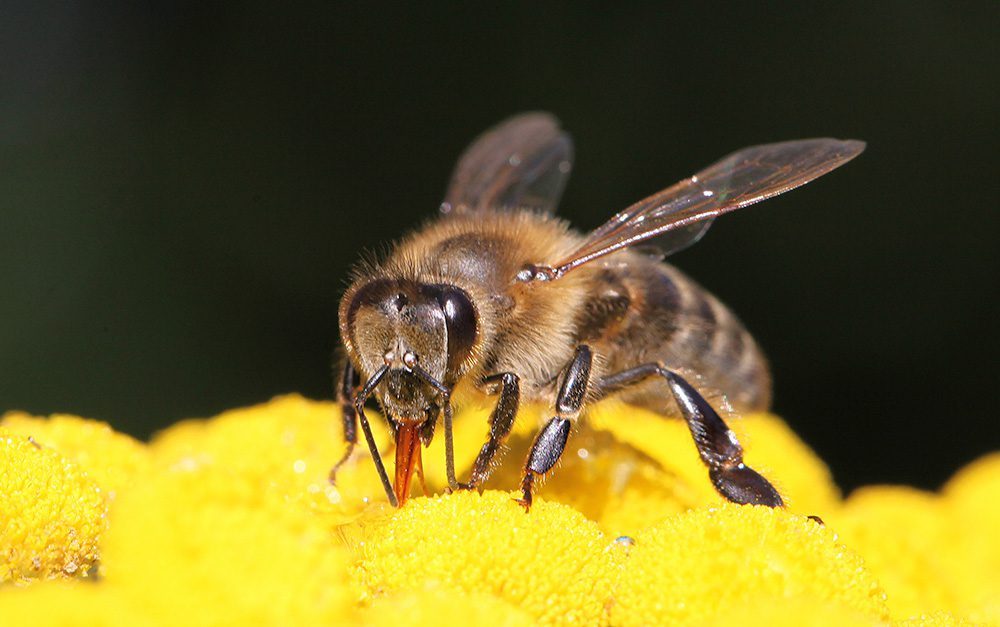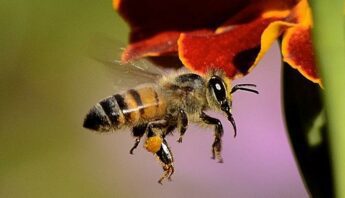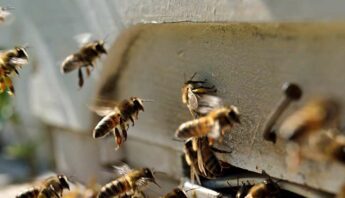Beekeepers report their industry is on the verge of collapse, and farmers relying on honey bees for pollination services are increasingly nervous.
Since 2006, when the term “Colony Collapse Disorder” or CCD was coined in the U.S., commercial beekeepers have reported extraordinary losses averaging 29 to 45 percent per year. Such losses are unprecedented — more than double what is considered normal.
Wild pollinators like bats and bumble bees are also facing catastrophic declines, with many of the same factors stressing their populations.
Follow the science
The causes behind recent bee declines are not a “mystery.” Independent scientists now largely concur that bee declines are caused by a combination of several factors, including: increased overall pathogen loads, poor nutrition, habitat loss and pesticide exposure.
In the last several years, neonicotinoid pesticides — both alone and in combination with other pesticides — have emerged as a key catalyst behind this disturbing phenomenon, both because of their direct toxicity to bees and their indirect and cascading effects.
Scientists know that individual bees can be acutely poisoned while flying through pesticide-contaminated planter dust in a recently planted corn field. More commonly, they are chronically poisoned at sublethal levels by eating and drinking contaminated pollen, nectar and water over time. Bees are then more likely to get sick.
Even at low doses, neonics can cause harm to honey bee health over time. Impacts include:
- Compromised immune response
- Shortened adult life cycles
- Impaired memory and learning
- Reduced social communication (reduces foraging efficacy)
- Disorientation, which also impairs foraging
- Delayed larval development and disrupted brood cycle
- “Gut” microbe disruption, leading to malnutrition
Industry-sponsored studies have proven systematically biased. Not surprising, since pesticidemakers like Bayer and Syngenta are deeply invested in the continued sale of their neonic products — the most widely used insecticides in the world.
Value of pollination
According to a recent UN report, more than 70 of the 100 crops that provide 90 percent of the world’s food rely on bees for pollination. Managed honey bees remain the most economically important pollinator, contributing over $19 billion annually to the U.S. economy.
Rapid declines in pollinator populations put additional stress on an already unstable food supply by depressing yields and agricultural efficiency. While pollination biologists do not foresee imminent food system collapse without honey bees, we do know that agriculture would quickly become unrecognizable — and much more limited.
Bees are responsible for one in every three bites of food: from almonds to berries and the alfalfa that feeds dairy cows, our diets and agricultural economy hinge on a healthy bee population.
Farmers are on the frontlines of the economic impacts of bee decline. For example, the cost of almond pollination has nearly tripled since colonies began collapsing in 2004, costing that industry over $83 million per year.
The “canary in the coal mine”
In addition to their agricultural value as pollinators, honey bees are a keystone, indicator species. Their decline points to (and will likely accelerate) broader environmental degradation.
Scientists point to pollinator population declines as a disproportionately important piece of the current collapse in biodiversity.
However, bees’ critical role as pollinators means that attending to their health and intervening on their behalf presents a unique opportunity for bolstering the health and resilience of both our environment and our agricultural economy.
As an indicator species, honey bees are sounding an alarm that we ignore at our peril. Among their lessons: industrial agriculture has gone off the rails. The pesticide treadmill has kicked into high gear with a class of dangerous systemic pesticides — while regulators were asleep at the switch.
Join us in building momentum for this important issue! Together, we’re keeping the heat on decisionmakers in Washington, DC, and in statehouses across the country to take meaningful action. And fast.







